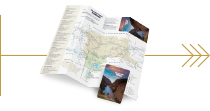Raptor Conservation in Yellowstone Country

Photo by Shawn Raecke
Birds of prey, or raptors, are birds who share particular characteristics. These include a hooked beak, curved at the tip with sharp cutting edges to rip and tear apart their prey, and strong feet with sharp talons that can grip their prey and pierce the soft tissue and vital organs. They also have keen eyesight and very accurate depth perception to catch things in motion. In addition, nocturnal raptors, such as owls, have excellent night vision. And they are carnivores.
Watching these incredible birds as they hunt for prey is spectacular as they swoop and dip through the sky. In the early ’70s, the bird of prey populations began to plummet due to the chemical DDT. In 1972, the chemical was banned from most uses, and raptor populations began to increase. Sadly, recent research, published in the journal Biological Conservation, found that 52% of all 557 raptor species have declining global populations, mainly due to loss of habitat.
There are several organizations in Yellowstone Country working to protect these beautiful creatures. Whether rescuing and rehabilitating and releasing or offering a forever home, these birds are well cared for.
Montana Raptor Conservation Center, a center to rehabilitate injured birds, also offers community education and raptor conservation and research partnerships. MRCC provides medical care, physical therapy, and rehabilitation before releasing the birds back to the wild Unreleasable raptors live at MRCC long term, serving as education birds. Those that are released are banded for ongoing research. You can watch raptors being released into the wild on their YouTube Channel.
The raptors at the Grizzly and Wolf Discovery Center are more than just bears and wolves; they are also forever home to raptors. Many of these birds cannot fly or see well or may have behavioral challenges that make it impossible for them to survive in the wild. Some of these birds are part of a seasonal, outdoor raptor exhibit May through November.
In Red Lodge, Montana, the Yellowstone Wildlife Sanctuary also provides homes for unreleasable raptors. The birds now help with conservation education native to the Greater Yellowstone Ecosystem. And, in Livingston, Montana, volunteers for the Yellowstone River Osprey Nest Monitoring Project adopts nests and monitors the birds, recording their data until they fly south for the winter.
The Bridger Raptor Festival is centered around the largest known Golden Eagle migration in the United States. Occurring each October, families can hike to the top of Bridger Bowl to see the count. In addition, they can enjoy movies, speakers, live raptors, educational talks, and nature walks, plus games and activities for the kids!
To learn more about the birds in Yellowstone Country, go to Sacajawea Audubon Society.


